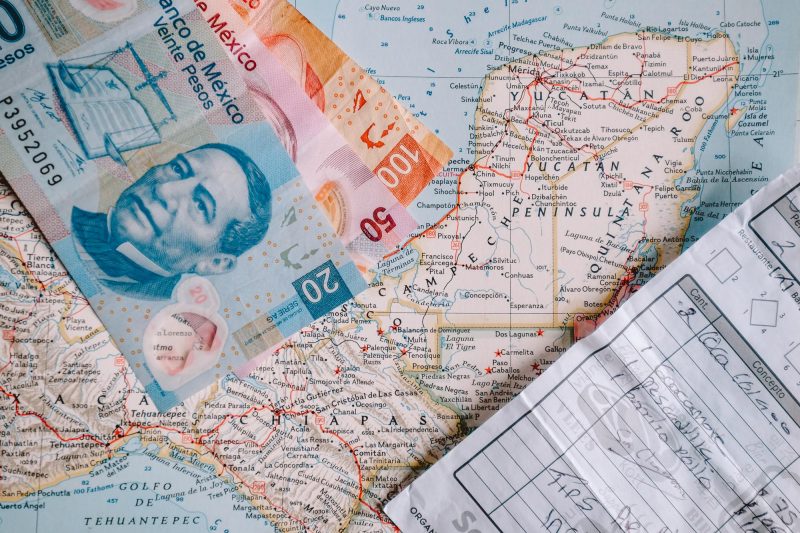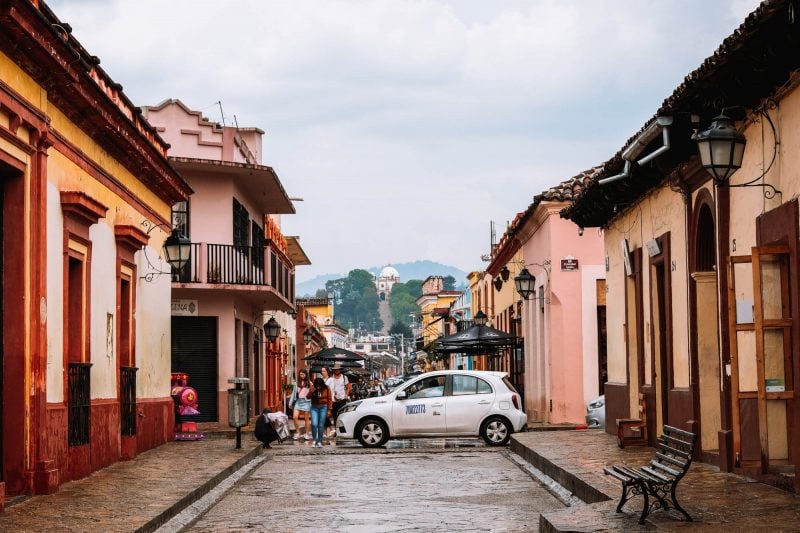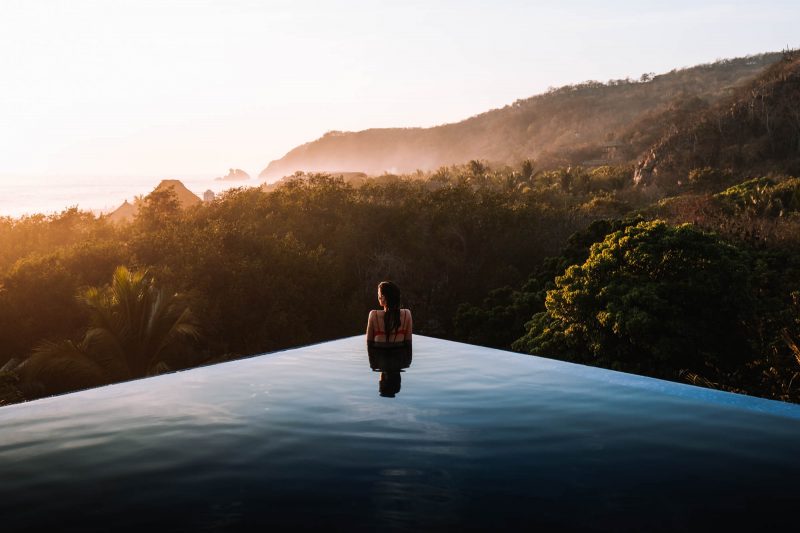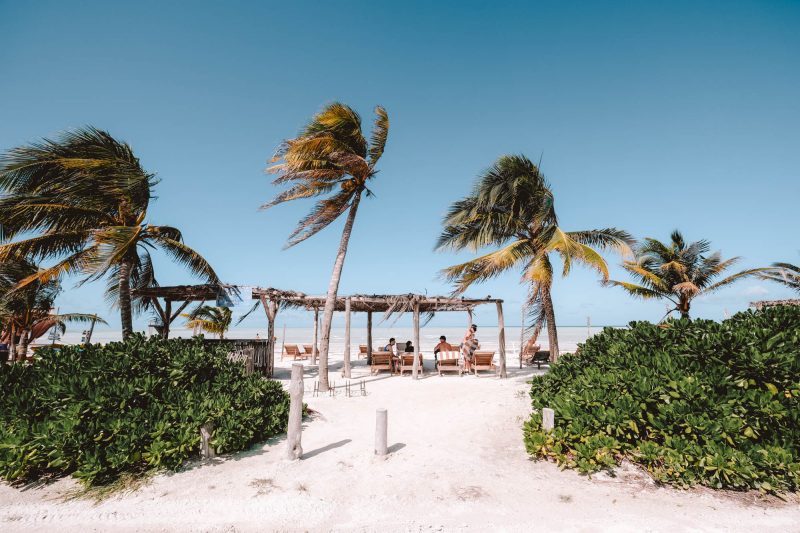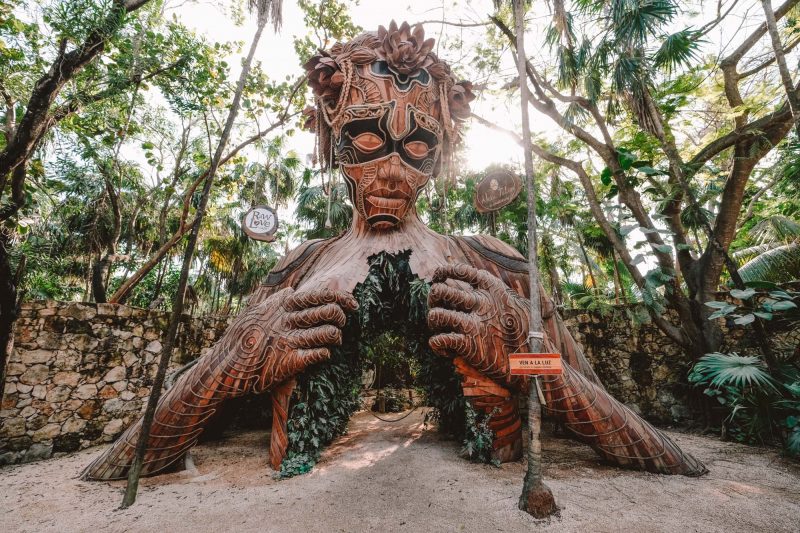We highly recommend taking a trip through Mexico. When you think of Mexico, you think of avocados, sombreros, tequila, tacos, and the oh-so-cheery music. As the second-largest country in Latin America, Mexico is vast, and you can’t see everything at once. However, Southern Mexico is the safest part of the country, and you can travel without any concerns. You’ll come across breathtaking pearly-white beaches, temples, jungles, and other natural wonders. The tips provided in this article are based on our personal experiences in this region and may not apply to other parts of Mexico.
#1 There is a time difference between some states
Yucatan is both the name of the peninsula and one of the three states located on it. In our ultimate beach destinations itinerary, you will explore the states of Yucatan and Quintana Roo.
All the destinations on our itinerary are in Quintana Roo except Valladolid, which is in Yucatan. It’s important to note that there is a time difference between Quintana Roo and Yucatan. For instance, if you’re traveling from Isla Holbox to Valladolid, the clock goes back an hour. However, if you proceed to Tulum, the clock moves forward by an hour. This is crucial to consider when checking in at hotels. In the alternative itinerary for southern Mexico, you’ll also encounter a time difference between the states of Chiapas and Quintana Roo.

#2 Safety in Mexico
Mexico has had a troubled reputation, mainly due to the notorious cartels and drug trafficking. However, it’s crucial to note that certain parts of Mexico are safer than others. Some states in northern Mexico are best avoided as a tourist, but the southern states of Chiapas, Oaxaca, Yucatan, and Quintana Roo are among the safest. While it’s important to exercise caution in these countries, these states are popular tourist destinations, and the majority of visitors won’t encounter any issues with crime. To ensure a safe and enjoyable trip, it’s wise to take some basic precautions, such as avoiding walking alone at night, not displaying valuables, and being mindful of your surroundings. Additionally, it’s helpful to stay updated on local news and check travel advisories before your trip. With some common sense and planning, Mexico can be a fantastic travel destination, rich in culture, history, and natural beauty.

#3 Keep your eyes open for tropical birds
Yucatan is a lush green peninsula that serves as a home to over 550 bird species. Therefore, it’s not only a paradise for people, but it’s also a favorite spot for birds. While exploring the region, it’s recommended to keep your eyes and ears open and take a peek into the trees now and then. Sian Ka’an National Park, located next to Tulum, is a popular destination among tropical birds. During our visit, we spotted the red spoonbill, hummingbirds, and parakeets, among others. On Isla Holbox, you’re likely to come across flamingos and pelicans.
#4 A life jacket is mandatory in many cenotes
There are thousands of cenotes to discover in Yucatan, some more even more fascinating than others. Due to recent incidents, most cenotes now require visitors to wear a life jacket, even if you’re an experienced swimmer. You’ll receive the vest at the entrance, and it’s included in the entrance fee. On the one hand, this is of course unfortunate because you cannot dive and it is not really comfortable. On the other hand, you do stay nice and relaxed afloat. At the lesser-known cenotes, you are not required to wear a life jacket (yet). For the pictures, unfortunately, it’s a lot less pretty….

#5 Tips are common
When dining out at restaurants in Mexico, it’s customary to leave a tip of about 10% to 15% if you’re satisfied with the service. Most restaurants include an optional tip on the receipt, but in some cases, the tip may be added to the total amount without your consent. It’s important to note that tipping is voluntary, so if the amount seems excessive to you, you’re not obligated to pay it. Sometimes the tips are (up to 25%) or they state it very unclearly on the receipt so that you think it does not include a tip. Therefore, always check the receipt carefully and don’t just look at the total amount. We also had times when the tip was listed on the receipt in Spanish while the rest of the receipt was in English.
#6 Sometimes the beaches are full of seaweed
Mexico’s eastern coastline has faced a severe seaweed problem in recent years. Due to climate change, large amounts of seaweed wash up on the shore several times a year. This sudden influx of seaweed can quickly cover the once-pristine white sandy beaches, leaving behind a pungent odor. When seaweed accumulates, many people work tirelessly to clean it up as quickly as possible. However, in some cases, it may take a while for the beach to be fully restored. The period between May and October is when the seaweed is most prevalent, so if possible, it’s best to avoid this time. During the winter months, you’re more likely to enjoy excellent weather, clear blue seas, and white beaches.

#7 Hold onto the immigration papers.
Upon arrival in Mexico, immigration officials will stamp your passport and issue a piece of paper that belongs with your immigration form. It’s crucial to keep this piece of paper safe, as you’ll need to turn it back in when you leave the country. Losing these documents may result in a fine, so it’s important to keep them secure.
#8 Bring your own snorkel kit
Southern Mexico is a vast tropical paradise, offering plenty of snorkeling opportunities in various places. For instance, you can enjoy snorkeling in a cenote, swim with turtles in Akumal or explore the beautiful Bacalar lake. While renting snorkel sets is possible almost everywhere, they may not fit well or come for free.Therefore, purchasing your own snorkel set before your trip and bringing it along is a smart move. Doing so will not only provide you with a more personalized experience but also guarantee better hygiene.

#9 Con o sin cilantro?
Mexican cuisine is a food lover’s paradise, offering a variety of delicious dishes such as burritos, tacos, tortillas, quesadillas, guacamole, nachos, and more. While many Latin American countries prepare dishes with minimal herbs and spices, Mexican cuisine stands out for its bold flavors and real spice. With a diverse range of dishes to try, you’ll have no shortage of options during your trip to Mexico. However, if you’re not a fan of cilantro, be cautious. About 14 percent of the world’s population finds cilantro to have a soapy aftertaste. If you belong to this group, it’s best to let them know while ordering, because Mexicans love cilantro and add it to almost every dish. If the waiter doesn’t speak English, simply say “Sin cilantro por favor” in Spanish.
#10 There is more than tequila
Mexico is famous not only for its mouth-watering cuisine but also for being the birthplace of tequila – a drink so beloved that it even has its own musical number. However, when in Mexico, don’t limit yourself to tequila alone. Be sure to also try Mezcal, which many consider to be the new tequila. Mezcal is gaining popularity and is slowly taking the world by storm. Mexico has an immense number of delicious local drinks so let yourself be surprised once in a while. Cheers!
#11 A rental car is ideal in Mexico
Even though public transportation in Mexico is well-organized, renting a car is still an excellent option. Having your own car enables you to explore without being dependent on bus schedules or taxis. It’s wonderful to hop in the car and head to a beautiful spot for a spontaneous sunset view. Driving in southern Mexico is easy and safe, with mostly straight and flat highways connecting villages and towns, making it a quick and efficient way to reach your next destination. However, before you hit the road, it’s advisable to read our tips for car rental and driving in Mexico to ensure that you’re fully prepared.













